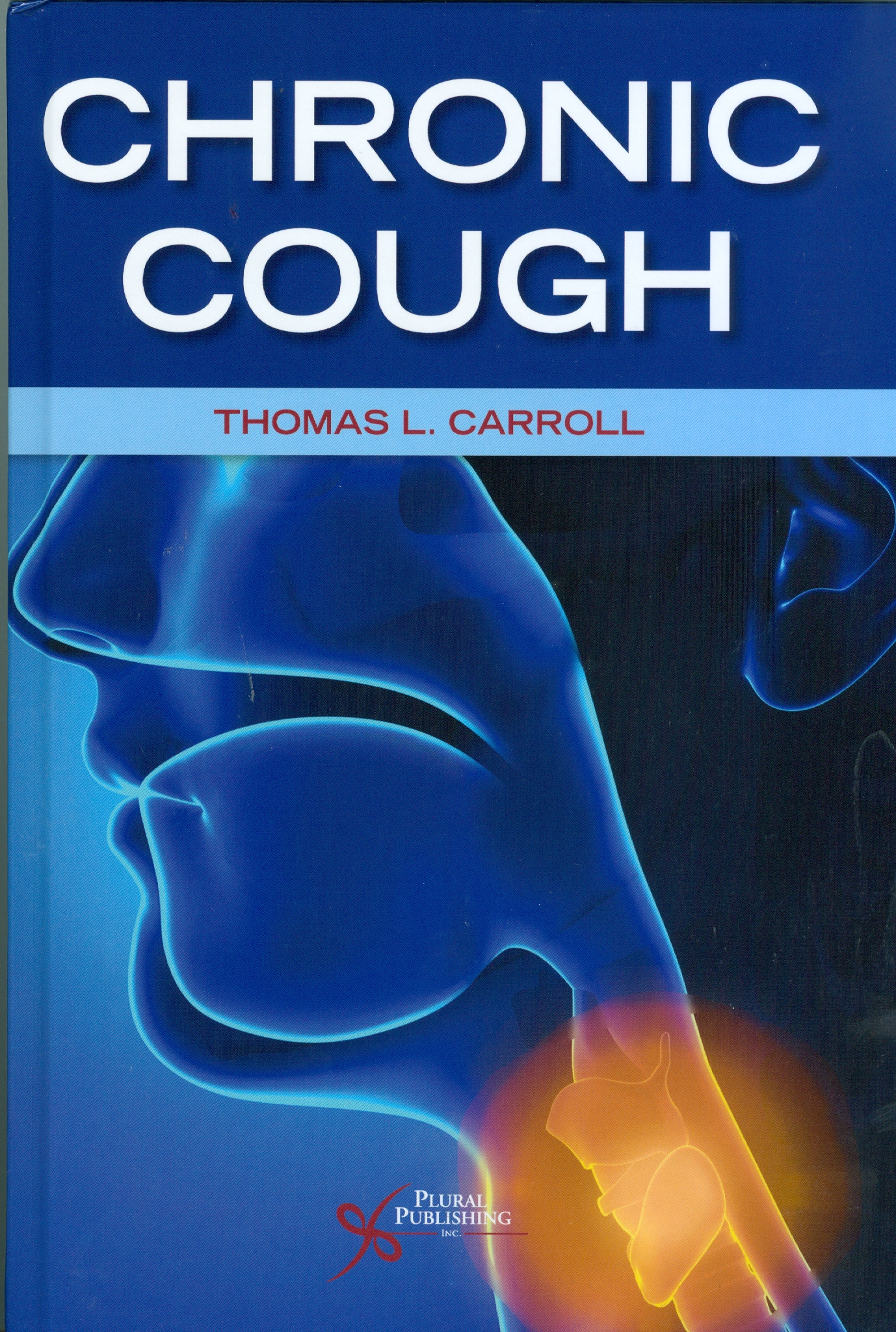Review by L Flood
Middlesborough, UK
This is an important new book, dealing with what can seem a heart-sink symptom and one which is often referred to the otolaryngology department as a last resort. The poor physicians have tried their bronchodilators and steroids, eliminated any vestige of gastric secretion, and, in despair, wonder about ‘the sinuses’, if only to share the problem.
Much here is novel, especially the major input from laryngologists and rhinologists. At a first flick through the book, features like ‘Take Home Points’ and especially the boxed ‘Thinking Outside the Box’ in every chapter really appealed. I quickly regretted only getting this to read at three months after retiring from clinical practice!
An opening chapter starts off with science and the physiology of cough, but quickly provides a nice introduction to the common causes of chronic cough that will be covered, together with the clinical approach, whether history examination or diagnostic aids. I learnt of a new mnemonic, ‘SAW’, which stands for sarcoid (supraglottic), amyloid (glottic) and Wegener’s (subglottic), and merits further reading. The Leicester Cough Questionnaire was new to me (but I cannot resist wondering how our transatlantic cousins pronounce that city’s name).
Then there comes a chapter on cough variant asthma and related diseases, which is a superb summary of the disorder and its treatment, targeted at those who rarely wield a stethoscope. To my dismay, ‘reactive airways disease’ proves a term to be deplored, and those ‘Take Home Points’ here are excellent. ‘Sinonasal Disease and Allergy’ is a chapter title of obvious relevance, but the clever section heading that caught my eye was ‘When it isn’t Sinonasal Disease’; a classic example of thinking outside the box as an author.
Reflux is, of course, our safety net when foxed by many an ENT symptom. It is amusing to read in the opening sentence of ‘Thinking Outside the Box’ that ‘chronic cough due to reflux is a rare creature’, and to contrast it with the rhinologist’s view on page 39: ‘the most common causes of cough include gastro-oesophageal reflux’. A further chapter looks at the basic sciences of reflux. Both chapters reinforce an increasing view that drugs with names ending in ‘-zole’ are grossly overused and that there is more to the refluxate than hydrochloric acid anyway.
Neurogenic cough and laryngeal hypersensitivity syndrome is probably still a diagnosis of exclusion, but the role of neuromodulators, as with chronic pain syndromes, is particularly interesting and certainly new to me. Dysphagia may well be associated with chronic cough, but I was unconvinced it merited a separate chapter; a minor criticism. The chapter on the role of the speech and language pathologist, in contrast, was filled with pearls of wisdom, strategies and interventions. The most important message for me was to accept that such a referral has probably never before even occurred to me!
Finally, came chapters on ‘putting it all together’ (i.e. setting up a specialist service) and ‘Future Directions’, which is self-explanatory. Again, we read ‘Non acid LPR [laryngopharyngeal reflux] is the most common cause of chronic cough in the experience of the author’. Medicine was ever thus, and such debate is only healthy and stimulating (but it is fun to spot how views can still differ so widely, and I have a sneaking, if cynical, suspicion which one of these views will prove right in time).
I try in these reviews to spot the titles that might easily be missed by our readership, but which are of great relevance. This is clearly that, and I do wonder if a subheading might have clarified just how much it is both written by and targeted at even the most senior in our specialty. This is a read that could significantly influence practice and I only wish it had appeared years ago.
Amazon Link: Chronic Cough
By purchasing books via this link you will help to fund the JLO

